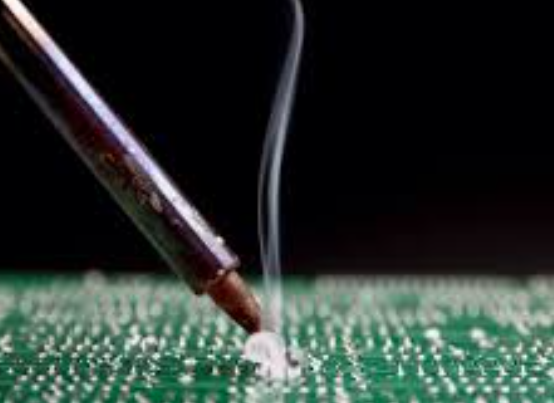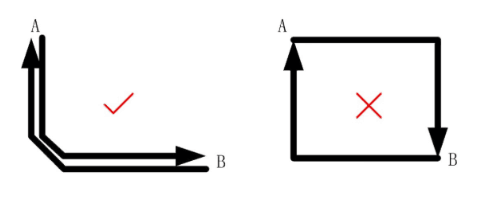PCB circuit anti-jamming measures
In the design of electronic systems, in order to avoid detours and save time, the requirements of anti-interference should be fully considered and satisfied, and remedial measures against interference should be avoided after the design is completed. There are three basic elements of interference:
(1) Interference source refers to the component, device or signal that generates interference
and is described in mathematical language as follows: du/dt, where di/dt is large is the source of interference. For example, lightning, relays, thyristors, motors, high-frequency clocks, etc., may become interference sources.
(2) Propagation path refers to the path or medium that interferes with the propagation from a source of interference to a sensitive device.
The typical interference propagation path is through conduction of wires and radiation of space.
(3) Sensitive devices are easily disturbed. Such as: A / D, D / A converters, microcontrollers, digital ICs, weak signal amplifiers and so on.
The basic principles of anti-jamming design are: suppress interference sources, cut off the interference propagation path, and improve the anti-jamming performance of sensitive devices. (similar to the prevention of infectious diseases)
1 Suppression of interference sources
The source of interference suppression is to reduce the interference source du/dt, di/dt as much as possible. This is the best first consideration and most important principle in anti-jamming design, and it will often have a multiplier effect. Reducing the interference source du/dt is mainly achieved by connecting capacitors across the interference source. Reducing the di/dt of the interference source is achieved by connecting the series inductance or resistance of the source circuit and adding freewheeling diodes
The common measures for suppressing interference sources are as follows:
(1) Add free-wheeling diodes to the relay coil to eliminate back-EMF interference generated when the coil is disconnected. Adding only the freewheeling diode delays the relay opening time. After increasing the zener diode, the relay can act more times per unit time.
(2) Connect the spark suppression circuit at both ends of the relay contact (usually the RC series circuit, the resistance is generally selected from several K to several tens of K, and the capacitance is selected as 0.01uF) to reduce the impact of spark. The
(3) Add a filter circuit to the motor. Note that the lead of the capacitor and inductor should be as short as possible. The
(4) Each IC on the circuit board must be connected with a high-frequency capacitor of 0.01μF to 0.1μF to reduce the influence of the IC on the power supply.
Pay attention to the wiring of the high-frequency capacitor. The connection should be close to the power supply and be as short as possible. Otherwise, it will increase the equivalent series resistance of the capacitor and affect the filtering effect.
(5) Avoid 90-degree polylines during wiring to reduce high-frequency noise emissions. The
(6) Both ends of the thyristor are connected to the RC suppression circuit to reduce the noise generated by the thyristor (this noise may breakdown the thyristor).
According to the interference propagation path can be divided into two types of conductive interference and radiation interference. The
The so-called conducted interference refers to the interference transmitted to the sensitive device through the wire. The frequency band of high-frequency interference noise and useful signals is different. It is possible to cut off the propagation of high-frequency interference noise by adding filters to the wires. Sometimes, it is also possible to add an isolation optocoupler to solve this problem. Power supply noise is the most dangerous and special attention must be paid to handling. The so-called radiated interference refers to interference that propagates through spatial radiation to sensitive devices. The general solution is to increase the distance between the source of interference and the sensitive devices, isolate them with ground and cover the sensitive devices.
The common measures to cut off the interference propagation path are as follows:
(1) Fully consider the impact of the power supply on the microcontroller. The power supply is doing well, and the entire circuit’s immunity to interference is solved by more than half. Many microcontrollers are very sensitive to power supply noise, and they must add a filter circuit or regulator to the microcontroller power supply to reduce the power supply noise interference to the microcontroller. For example, you can use magnetic beads and capacitors to form a π-shaped filter circuit. However, if the requirements are not high, 100Ω resistors can be used instead of magnetic beads.
(2) If the I/O port of the microcontroller is used to control noise devices such as motors, isolation should be added between the I/O port and the noise source (adding a π-shaped filter circuit). To control noise devices such as motors, isolate the I/O port from the noise source (add π-shaped filter circuit).
(3) Note the crystal wiring. The crystal oscillator and the microcontroller pins should be as close as possible. Use a ground wire to isolate the clock area. The crystal case is grounded and fixed. This measure can solve many difficult problems.
(4) The circuit board is reasonably partitioned, such as strong and weak signals, digital and analog signals. Keep interference sources (motors, relays, etc.) away from sensitive components (such as microcontrollers) as much as possible.
(5) Separate the digital area from the analog area with a ground wire, separate the digital ground from the analog ground, and finally connect to the power ground at one point. The A/D and D/A chip wiring is also based on this principle. This requirement has already been taken into account when manufacturers distribute A/D and D/A chip pins.
(6) The ground of SCM and high-power devices should be grounded separately to reduce mutual interference. High-power devices are placed on the edge of the board as much as possible.
(7) Use anti-interference components such as magnetic beads, magnetic rings, power filters, and shields in key areas such as the I/O ports of the microcontroller, power cables, and circuit board connectors to significantly improve the anti-interference performance of the circuit.
3 Improve the anti-interference performance of sensitive devices
Improving the anti-interference performance of sensitive devices refers to minimizing the picking up of interference noise from the sensitive device side and recovering from abnormal conditions as soon as possible.

The common measures to improve the anti-interference performance of sensitive devices are as follows:
(1) Minimize the loop loop area during wiring to reduce induced noise.
(2) When wiring, the power line and ground should be as thick as possible. In addition to reducing the pressure drop, it is more important to reduce the coupling noise.
(3) For the idle I/O port of the microcontroller, do not leave it unconnected. Ground it or connect it to the power supply. The idle side of other ICs is grounded or connected to the power supply without changing the system logic.
(4) The use of power supply monitoring and watchdog circuits for microcontrollers, such as: IMP809, IMP706, IMP813, X25043, X25045, etc., can greatly improve the anti-interference performance of the entire circuit.
(5) Under the premise that the speed can meet the requirements, try to reduce the crystal oscillator and select the low-speed digital circuit. The
(6) The IC device is soldered directly on the circuit board as far as possible, and less IC seats are used.







